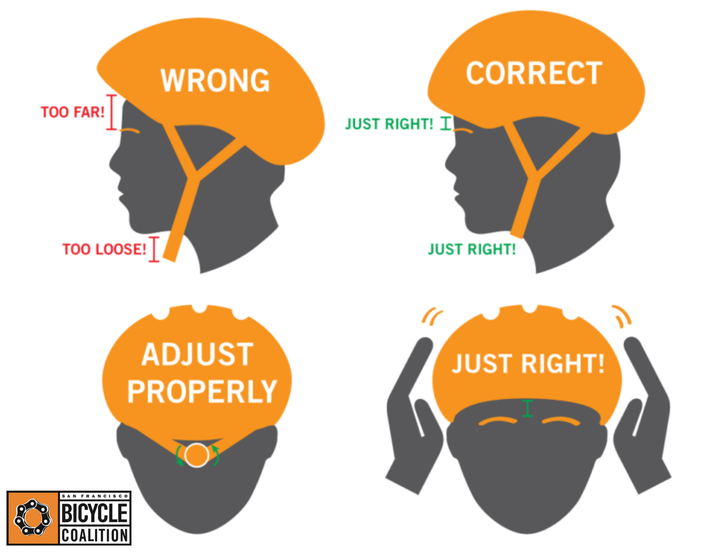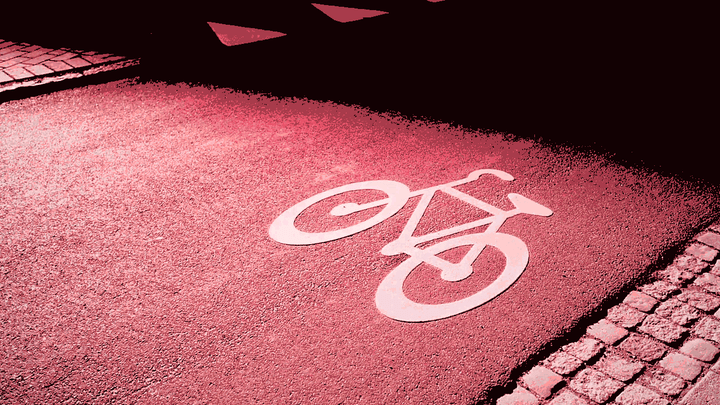
By April, my world had shrunk to the four walls of my apartment. There were too many days I never left my building. The coronavirus pandemic had halted my subway commute and limited my movements, and I was in a deep funk over it.
Learning how to ride a bike in a city pulled me out of my low mood.
I live a few blocks from a row of Citi Bikes, New York City’s bike-sharing program, and even though it had been years since I had ridden a bike and never for commuting, I was compelled to accompany my boyfriend, a more experienced rider, on an errand.
By the end of the ride, I was tired, exhilarated and I felt more alive than I had in weeks. I wanted to make bicycling a permanent habit. To work through my fears of getting hit by a vehicle, I rode a loop that kept me in a bike lane near my apartment, and each day, I expanded the route a little farther. I read up on local rules of the road and watched YouTube tutorials on the common hazards. In May, I bought my own bike as a birthday present. Riding a bicycle in New York City is now the one activity that is consistently guaranteed to put me in a better mood.
It quickens my pace and has expanded my world. It’s a gift to see the city I have lived in for years with fresh eyes. I’m not the only one turning to bikes right now. There’s a national bike shortage in the U.S. and the number of cyclists on the streets has spiked. And because fewer cars have been on the roads of New York City during lockdown, it’s a safer environment for newer bikers to test their skills.
If you’re among the new cyclists hitting the road, here’s the advice professional cyclists and bicycling instructors give those like us who are less experienced with riding in a city.
1. Read up on your local rules of the road.
Each state can have different rules on helmet use, bells, bike lights and sharing the road with vehicles, so you should look up your state’s laws and your local laws before hitting the road.
In general, as this video from the nonprofit League of American Bicyclists illustrates, there are a few principles that stay the same across traffic laws in the U.S. They include: Always ride with traffic, ride in the middle of the lane when sharing the road isn’t safe, and yield to crossing traffic.
2. Don’t be afraid to take the lane.
When you’re riding your bike, act like a car, so that you are more predictable to other road users, recommends Sydney Sotelo, adult education coordinator for the Washington Area Bicyclist Association. That includes stopping at red lights and stop signs, and riding in the same direction as traffic.
Sotelo recommends riding in the center of the lane if three feet of space between you and a vehicle is not possible. “It is a tip that can make motorists feel frustrated, but the reality is, it is the space that makes you most visible,” she said.
3. Remember there’s a pandemic and keep your distance.
Ayesha McGowan, a professional road cyclist with Liv Racing based outside Atlanta who has shared commuting tips on social media, recommends wearing a bandana as a face covering while riding and to bring hand sanitizer with you. “Minimizing the need to go inside places is just smart in general,” McGowan said.
4. Make sure your helmet fits.
Check the placement of the brim of your helmet. “You shouldn’t be able to fit more than two fingers horizontally between the top of your eyebrows and the rim of your helmet,” Eliana Marcus-Tyler, program coordinator at San Francisco Bicycle Coalition. If you can fit more than that, your helmet is either too far back or too low down.

You also shouldn’t be able to fit more than two fingers between your chin and your chin strap, or else it’s too loose, Marcus-Tyler said.
5. Go with a buddy who is more experienced to build confidence.
You can learn a lot from riding with someone who is more experienced and seeing how they react to different traffic situations.
After you follow your buddy for a while, switch up the positions. Sotelo recommends putting the less-experienced rider in front so they lead, as Sotelo does in her classes. “The person behind can actually move over into a lane to prevent motorists from coming up behind you to protect that [less] experienced rider, so they don’t need to worry about traffic behind them as much,” Sotelo said.
6. Double-check your bike equipment.

Spot small issues before they become big problems that strand you on the street. Sotelo recommended the ABC Quick Check method:
Air: Check if you have enough air in your tires by squeezing them. They should feel as hard as the back of your thumb knuckle. “Having a properly inflated tire takes some of the strain off of pedaling,” Sotelo said.
Brakes: Make sure your brake pads have not been worn down to less than 1/8 of an inch. If your hand brake levers come all the way into your handle bars when you press in, they need to be tightened, Sotelo said.
Chain: Your chain should not have rust or debris. Wipe down your bike after a muddy ride or a ride in the rain.
Quick Releases: Make sure all the levers on your seat post or in the center of your wheels are closed and locked.
Check: Make sure your bike is not rattling and is in working order.
7. Lock your bike to something that can’t be moved.
Don’t forget to lock up your bike if you have to leave it outside.
To prevent your bike from getting stolen, choose what you are locking it to wisely. “Make sure you lock your frame to something that is immobile and has a top that you can’t slide the bike over,” McGowan recommended. “Make sure you lock your wheels to your frames.”
8. Practice your skills and hazard avoidance maneuvers before they get put to the test.
You can dust up your skills by watching how more experienced cyclists do it. The League of American Bicyclists has videos on how to position yourself at intersections, signaling, and the ideal way to start and stop, for example.
Cyclists recommended practicing on quieter streets and practicing routes when they are less busy to get familiar with the roads. In car-free spaces, Marcus-Tyler advises practicing taking your hands off of the handle bars, so you get more comfortable with signaling and adjusting your face mask. “It’s really good to get more comfortable doing that before you’re riding in more heavily trafficked areas,” Marcus-Tyler said.
No matter where in the country you are, Marcus-Tyler said you never want to be in the path of a car door opening, even when you’re in a bike lane, because you could get hit by the door opening or you may need to swerve into traffic to avoid getting doored.
“We always recommend that people ride about five feet from parked cars,” Marcus-Tyler said. To stay outside of the door zone, look for the sharrows, or the painted shared lane marking, and aim for riding in the center of the arrow, she said.
9. Remember that you don’t have to bike the whole way there and back.
“Just because bicyclists have the right to ride in the road doesn’t mean you always should,” Sotelo said. “If you’re ever riding in a street and you feel uncomfortable, you can always get off of your bike and become a pedestrian.”
Remember you can combine your bike with other forms of transportation. “You can often take it on the train or the buses, and that can alleviate some of the distance you need to ride if you have a particularly far place you need to go,” McGowan said.
And remember to have fun with it. Think of all the driving headaches you get to avoid. “My absolute favorite thing about biking in a city as opposed to driving in a city is you never have to park a car,” McGowan said.
“Don’t give up,” said Leo Rodgers, a cyclist with Brooks England based in St. Petersburg, Florida, who is also a bike mechanic. Rodgers said when he falls off his bike, he puts it into perspective with thinking like, “I got my one in, I gotta keep it going.“
Rodgers said it helps to know how to fix a flat tire, but you don’t need to have cycling all figured out to get on a bike. “There’s a lot of things you might not know until you start riding. That’s when you start figuring things out,” he said.